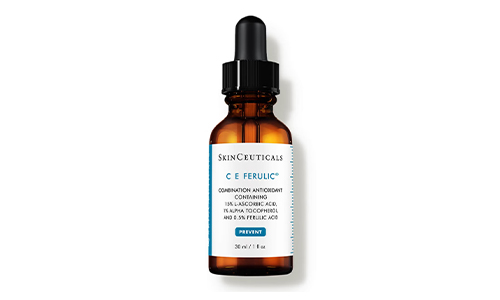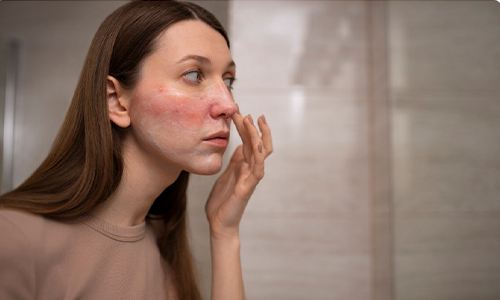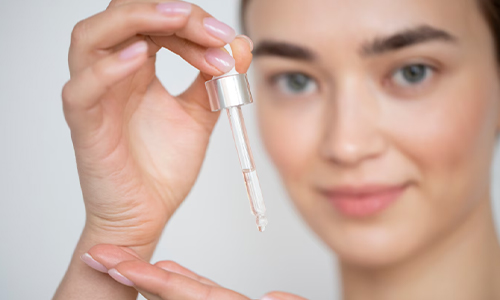Yes, it does. Ferulic acid has been shown to reduce hyperpigmentation by neutralizing free radicals, calming inflammation, and preventing further skin damage. Over time, regular use of ferulic acid can lead to a brighter, more even skin tone by minimizing dark spots and sun damage. But how exactly does it work?
And is it suitable for all skin types? Let’s break down the benefits of ferulic acid for skin and see how this powerhouse antioxidant fits into your skincare routine.
What Does Ferulic Acid Do to Skin?

Ferulic acid is a plant-based antioxidant found in the cell walls of oats, rice, apples, and oranges. In skincare, it’s widely used for its ability to fight signs of aging, protect against environmental stressors like UV rays and pollution, and most importantly—help fade dark spots and acne scars.
Key Ferulic Acid Benefits

- Neutralizes free radicals that lead to premature aging
- Reduces inflammation that may trigger melanin production
- Prevents photoaging and discoloration from UV exposure
- Stabilizes and boosts vitamin C and E, making them more effective
Ferulic Acid for Skin Whitening – What’s the Truth?

While ferulic acid for skin whitening might sound like it’ll bleach or lighten the skin, that’s not exactly how it works. Instead of changing your natural skin tone, ferulic acid helps fade uneven pigmentation, making the skin look visibly clearer and more radiant.
It’s especially useful for:
- Sun-induced pigmentation
- Post-acne marks
- Uneven skin tone
- Melasma
Ferulic Acid and Vitamin C – A Perfect Pair

If you’ve ever bought a ferulic acid serum, chances are it also contained vitamin C and E. Why? Because ferulic acid stabilizes vitamin C, which is notoriously unstable in most formulations. This combination helps boost collagen production, fade dark spots faster, and give the skin a glowy, even-toned finish.
Look for serums labeled as:
- Ferulic Acid + Vitamin C + E
- Brightening Antioxidant Serums
- Skin Tone Correction Serums
Ferulic Acid Before and After – What to Expect
Results won’t be immediate, but with consistent use, users often notice:
| Timeframe | Changes on Skin |
| 1–2 weeks | Improved hydration and glow |
| 3–4 weeks | Reduction in redness and minor dark spots |
| 6–8 weeks | Visible improvement in hyperpigmentation, smoother tone |
How to Use Ferulic Acid Serum or Cream
You can use ferulic acid in serum, cream, or even toner form. Here’s how:
- Cleanse your skin
- Apply ferulic acid serum in the morning (before moisturizer and sunscreen)
- Follow up with SPF 30 or higher (sun protection is non-negotiable)
- At night, alternate it with retinol or other treatment serums
Are There Any Ferulic Acid Side Effects?

Generally, ferulic acid side effects are rare. It’s well tolerated by most skin types, including sensitive skin. However, mild reactions may include:
- Redness or itchiness (rare)
- Breakouts if combined with other harsh actives
- Slight tingling upon first application
- Always do a patch test before using a new serum.
FAQs

What are the benefits of ferulic acid for face?
Ferulic acid helps reduce dark spots, prevent fine lines, brighten the skin, and increase the effectiveness of other skincare ingredients like vitamin C.
Is ferulic acid good for daily use?
Yes, it can be used daily, preferably in the morning routine with sunscreen to enhance its photoprotective benefits.
Can I use ferulic acid with retinol?
It’s best to alternate between ferulic acid and retinol rather than layering both. Ferulic acid in the morning, retinol at night is a good rule of thumb.
Is ferulic acid effective on dark skin?
Yes, ferulic acid is safe and effective for all skin tones, including deeper complexions prone to post-inflammatory hyperpigmentation.
Can I use ferulic acid and vitamin C together?
Yes! Ferulic acid and vitamin C are a powerful combination. Ferulic acid stabilizes vitamin C, allowing it to work longer and more effectively to brighten the skin and fight aging.
What’s the difference between ferulic acid serum and ferulic acid cream?
Ferulic acid serum is typically lightweight and ideal for oily or combination skin. Ferulic acid cream has a thicker texture and is better suited for dry or mature skin types.
Are there any ferulic acid side effects?
Ferulic acid is usually well-tolerated. Mild side effects may include redness or tingling for first-time users, but these are rare. A patch test is recommended before regular use.
Is ferulic acid safe for sensitive skin?
Yes, ferulic acid is considered gentle and safe for sensitive skin. However, those with extremely reactive skin should introduce it gradually and consult a dermatologist if unsure.
How long does it take to see results with ferulic acid?
You may notice brighter skin in 1–2 weeks, but visible fading of dark spots and improved pigmentation typically appear after 4–8 weeks of consistent use.
While not a miracle fix overnight, ferulic acid is a gentle yet effective treatment for hyperpigmentation and overall skin clarity. Its powerful antioxidant action combined with brightening properties makes it one of the best choices for a modern skincare routine.
If you're looking to fade spots, even out your skin tone, and protect your skin from environmental damage—start with products that highlight the benefits of ferulic acid for skin. Pair it with sunscreen, be consistent, and you’ll see the difference.













